The full name of this steamed pasta is ‘Youmian Kaolaolao‘ 莜面栲栳栳. Youmian Kaolaolao is a typical staple in the northern province of Shanxi 山西, where this unique species of oat grows. The name ‘Youmian‘ 莜面 refers to the flour made from the Eurasian ‘naked oat‘ called ‘Youmai‘ 荞麦, which is only commercially grown across northwestern China from Inner Mongolia to Gansu. Youmian Kaolaolao is eaten very much like rice or noodles, so there are no specific instructions on what normally is eaten with this oat pasta. The texture of Youmian Kaolaolao is smooth, and compared to normal pasta made from wheat, you do not feel bloated after eating it.
Another name for ‘Youmian Kaolaolao‘ 莜面栲栳栳 is ‘Youmian Wowo‘ 莜面窝窝 especially in Inner Mongolia, meaning ‘naked-oat dough nest‘, referring to its resemblance to a honeycomb.
‘Youmian Kaolaolao‘ 莜面栲栳栳/ ‘Youmian Wowo‘ 莜面窝窝 is one of the ten most famous noodles/pasta of Shanxi 山西.
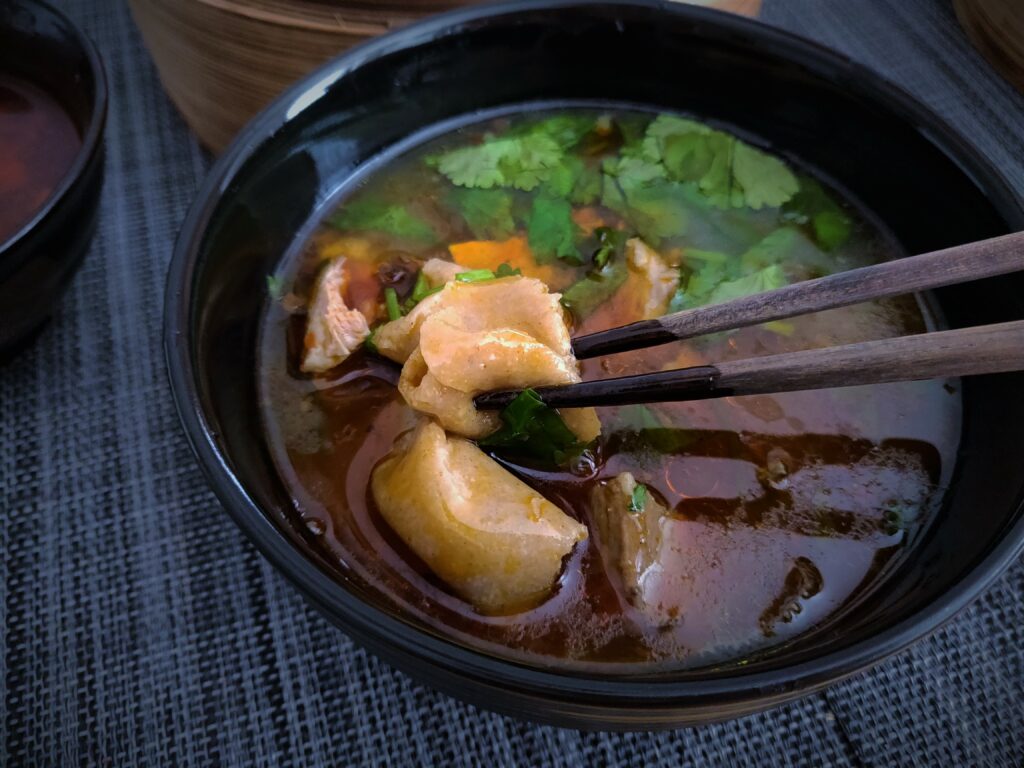
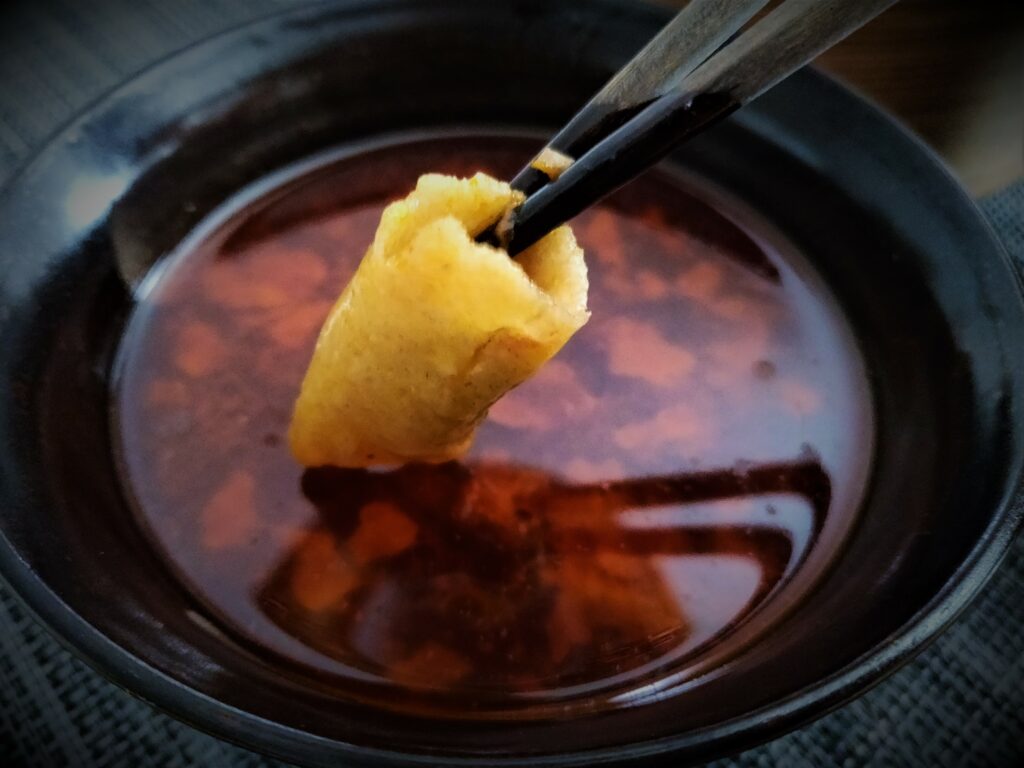
What is ‘Youmai 荞麦’ known as the ‘naked oat’?
The scientific name of ‘Youmai 荞麦’ is ‘Avena nuda‘. The common oat that we eat around the world is called ‘Avena sativa’. The reason why it is ‘naked‘, is because upon maturity, the hull will have been shed from the grain already, or the hull separates very easily from the grain when threshed.
Youmai is actually a wild oat grew throughout the Eurasian continent. As a crop however, the naked oat ‘Aveda nuda‘ was consumed in Europe for millennia until it was completely replaced by the common oat ‘Aveda Saliva‘ by the 19th century.
Commercially, it is now only available in northwestern China, where it is sometimes classified as ‘Aveda Chinensis‘ to indicate its current production venue.
Outside of China, it is almost impossible to buy the Aveda Nuda flour, known in Chinese as ‘Youmian 莜面’. But for this recipe, you can certainly use flour made from the common oat. There is of course a difference in taste and texture, notably, Aveda Nuda is much smoother in texture and refined in taste than Aveda Saliva.
What does the name ‘Youmian Kaolaolao 莜面栲栳栳’ mean?
While ‘Youmian‘ means ‘naked oat flour or dough‘, ‘Kaolaolao‘ 栲栳栳 has a more local etymology.
‘Kao‘ 栲 was a generic word in the region for plant or vegetable.
‘Laolao‘ 栳栳 is a local word for woven basket or container.
The name ‘Kaolaolao‘ 栲栳栳 really just means ‘woven basket’!
1400 Years of Being Misnamed by an Emperor
There is a legend about the dish’s name that dates it all the way to 1400 years ago. The founder of the Tang Dynasty Emperor Gaozu 唐高祖李淵 (7 April 566 – 25 June 635), was said to have been based in the Shanxi capital of Taiyuan 太原 before he became an emperor. On a journey through the Lingkong Mountain 灵空山, he stopped for a visit to an ancient Buddhist temple there called Pangu Si 盘谷寺.
The only resident monk in the temple welcomed the future emperor and offered him lunch. When he returned, Gaozu asked: “What do you have in your hand?”
The monk replied “Kaolaolao 栲栳栳” referring to the woven basket containing the naked oat pasta.
Gaozu thought that was the name of the food, which he thoroughly enjoyed.
Later when Gaozu overthrew the existing monarchy and founded the Tang Dynasty by becoming Emperor himself, he sang praises of the humble naked oat pasta that he had in this remote temple and hilariously called it “Kaolaolao“.
How do you eat Youmian Kaolaolao?
Youmian Kaolaolao is basically a staple. You replace it with rice and pair it with soup, stir-fried vegetables, or meat. Traditionally in Shanxi and in Inner Mongolia, Youmian Kaolaolao is often paired with lamb or mutton soup. An example of such a soup is the Taiyuan-style Yangzage 山西太原羊杂割, you can find the recipe here on my website.
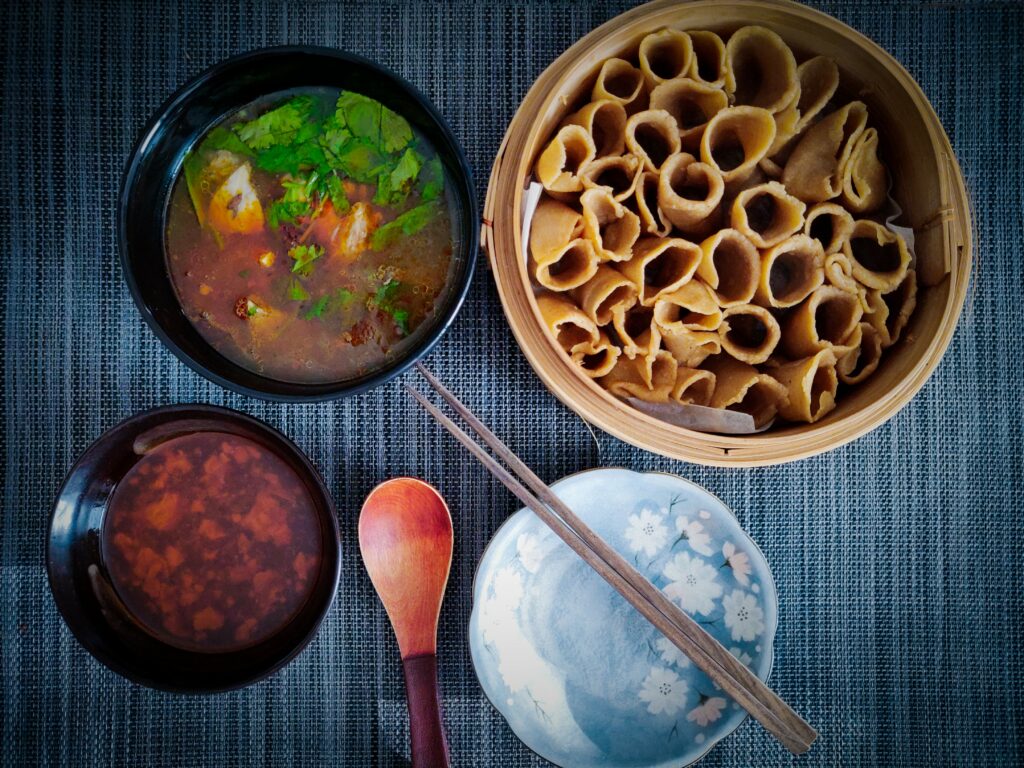
Ingredients:
- 250g naked oatmeal (Youmai 荞麦, Avena nuda), replaced with common oatmeal (Avena saliva) if not available
- 250ml hot water
Tools:
- Steam basket, lined with oiled wax paper
- A slab of smooth marble or a very smooth plate
Instructions:
- Stir your freshly boiled hot water slowly into your oatmeal, mixed with a pair of chopsticks, in a large salad bowl. Once the temperature lowers, knead the dough thoroughly with your hands. Form a cone. Cover with wet cloth to rest for about 10minutes.
- Pinch a 2cm sized ball off your dough cone. On a small slab of marble, or a very smooth plate, first roll it fully into a ball, then press it with the bottom of your palm then push your hand forward. This should roughly form a piece of thin rectangular dough.
- Use your finger to flip the rectangle into a tube. Place the tube vertically in your steam basket lined with wax paper.
- Repeat the process until your steam basket is full and the pasta looks like a beehive.
- Cover and place your steam basket above a pot of boiling water. Steam for 10 minutes.
- Serve the whole basket with the rest of your meal, piping hot.
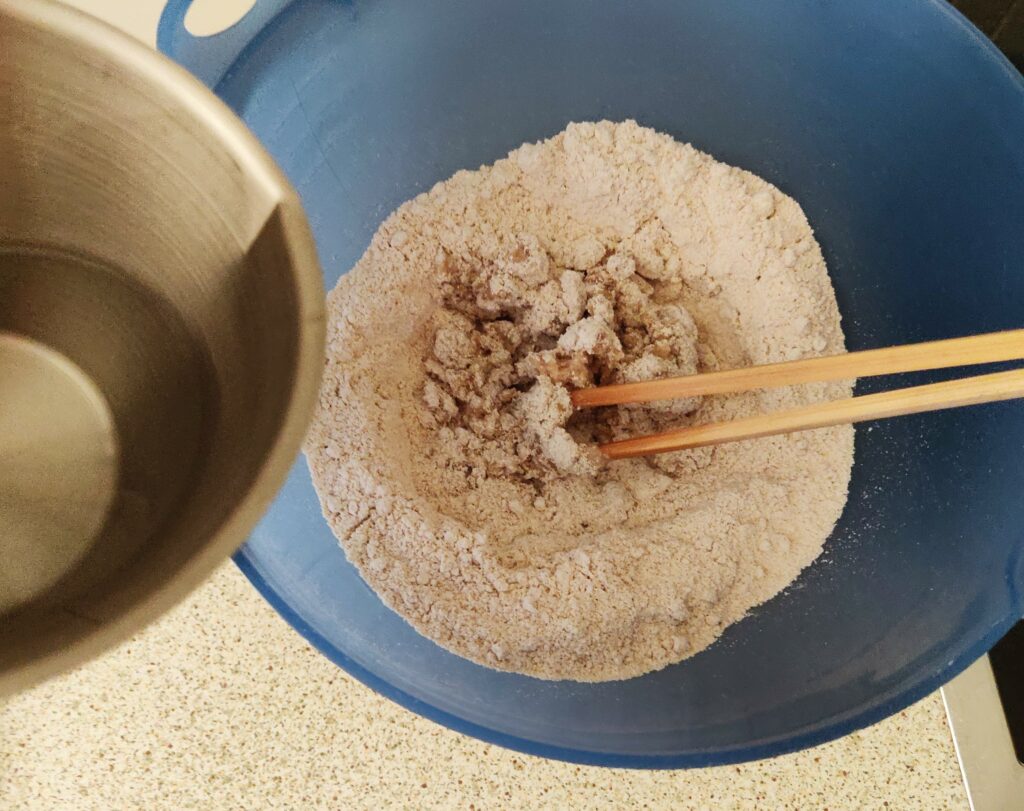

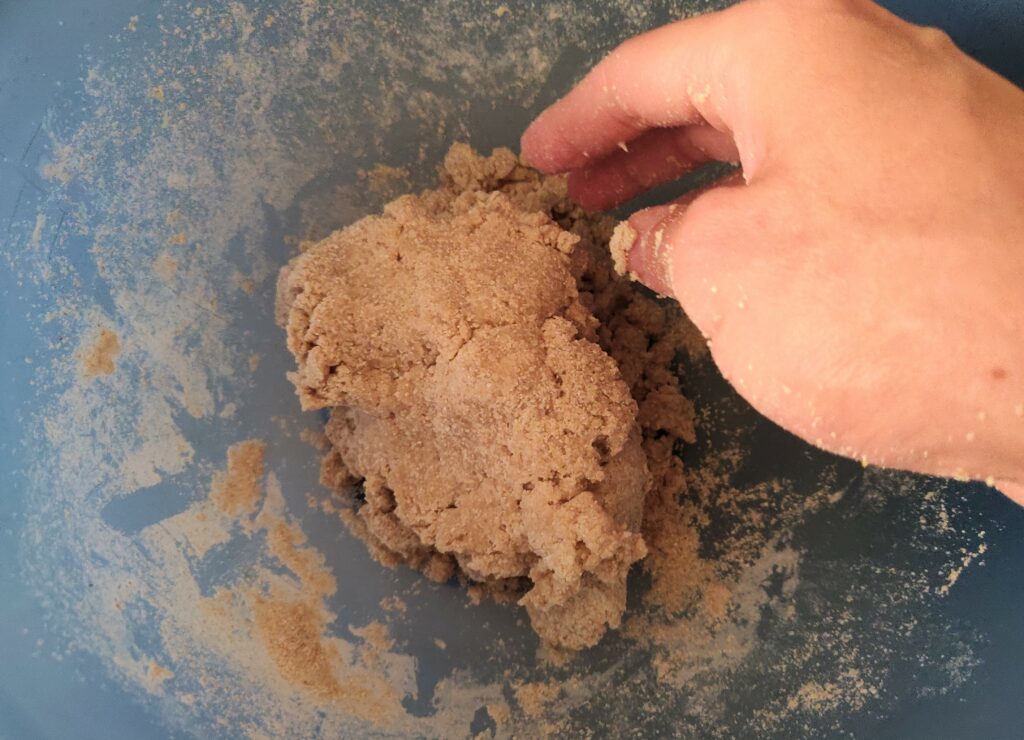
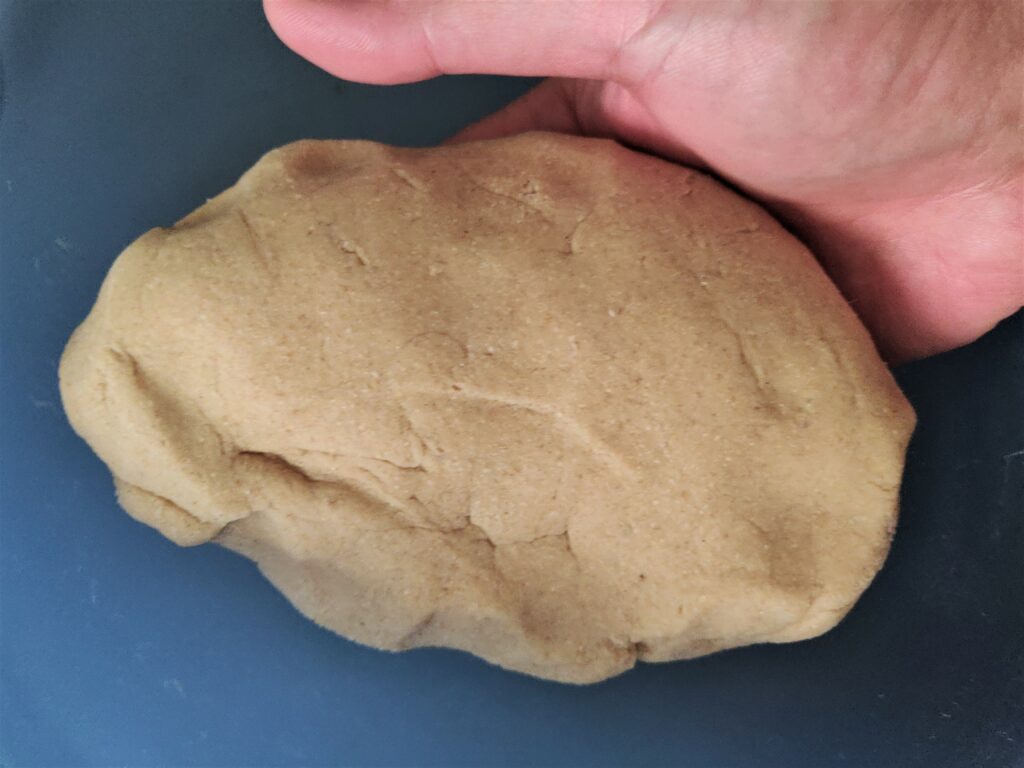

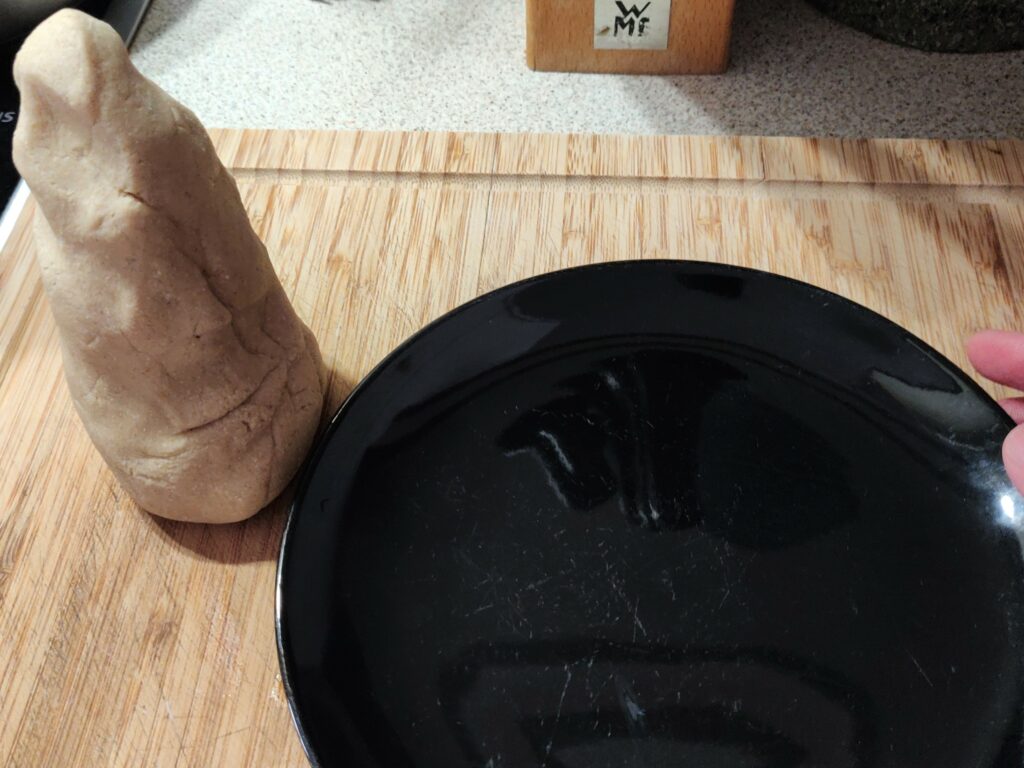
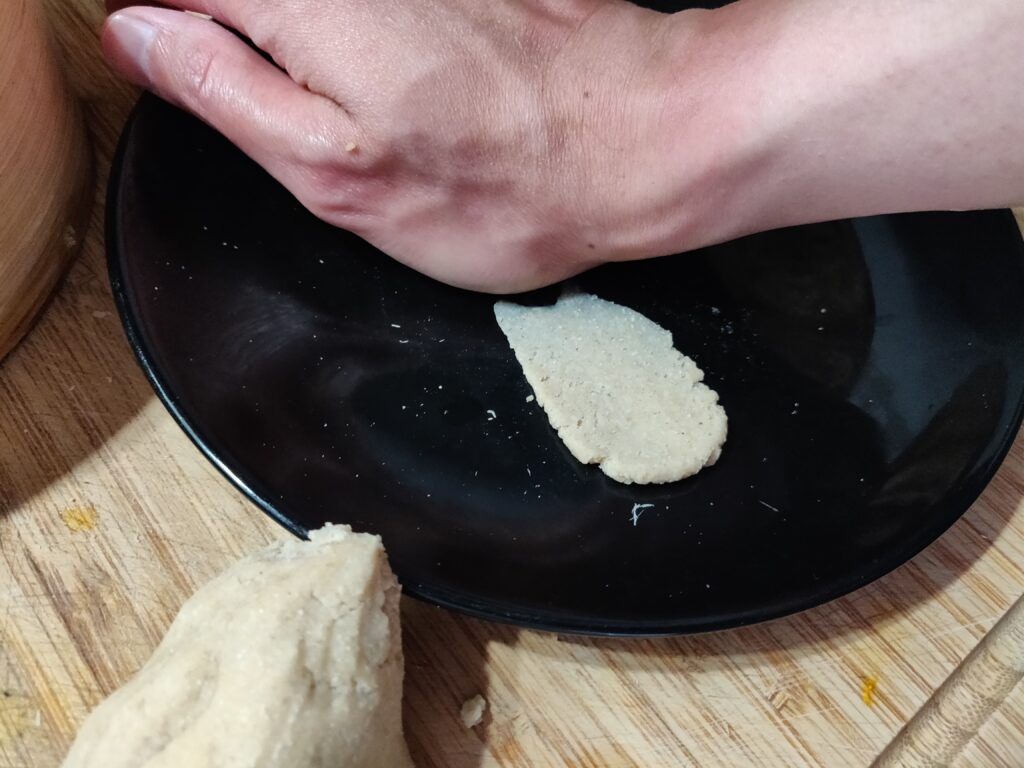
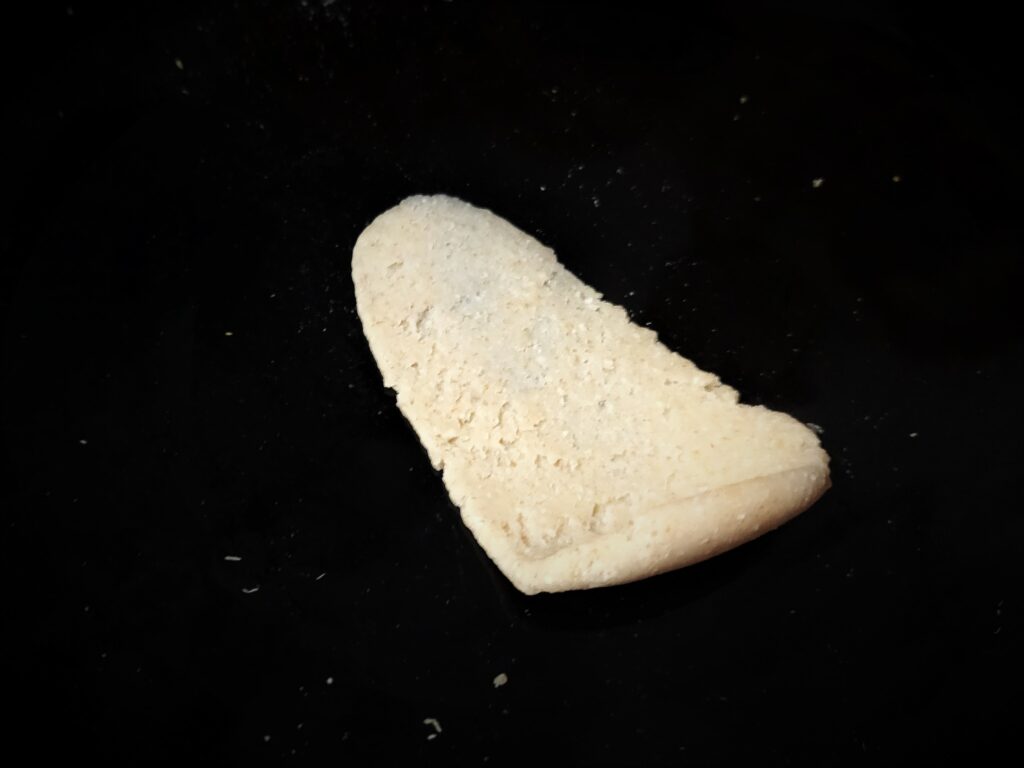

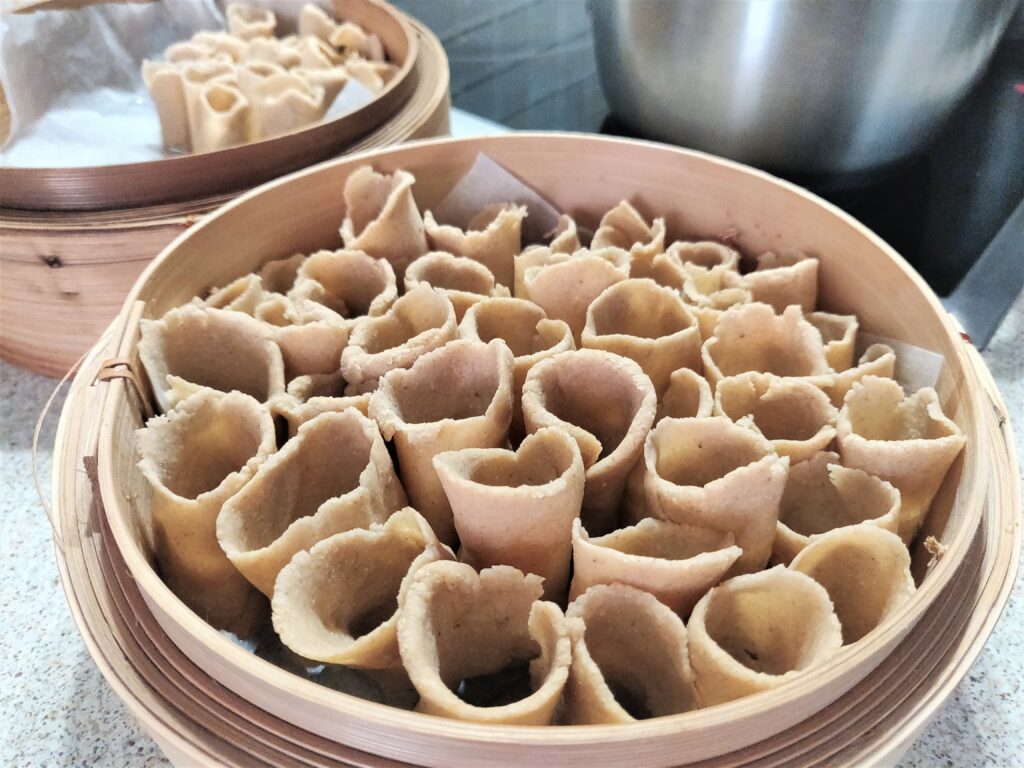
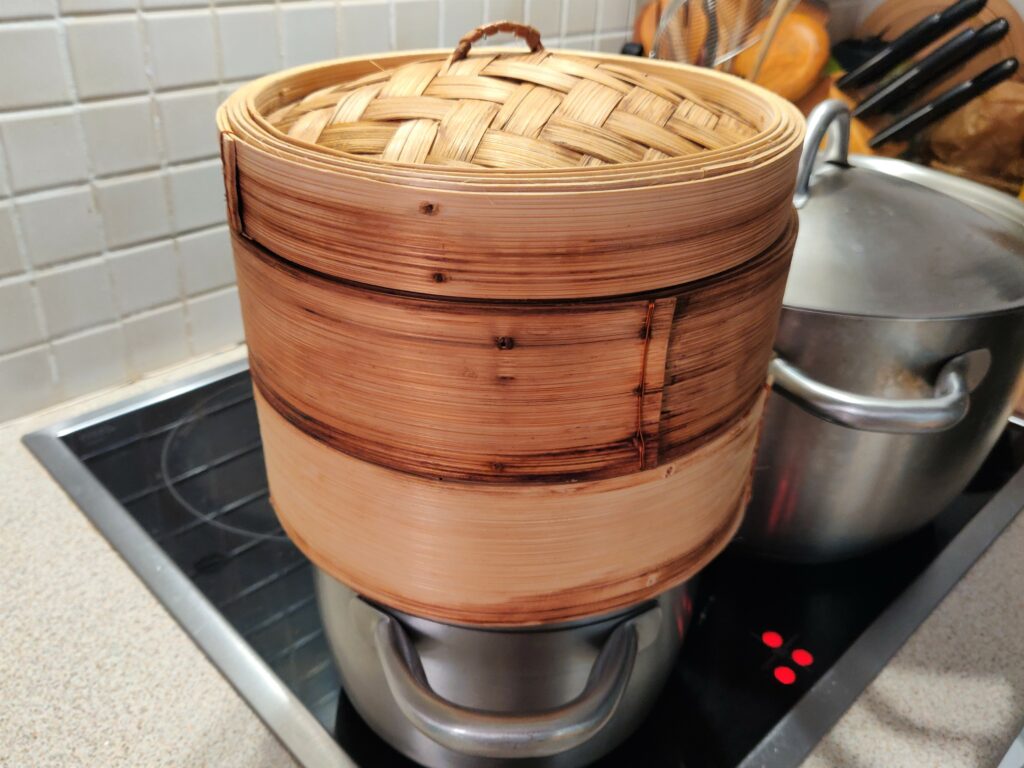

Tips:
- Cooked Youmian Kaolaolao cannot be stored. It will go soggy when steamed again or turn hard in the microwave.
- Time your pasta-making process with the cooking process of the rest of the meal, so that your Youmian Kaolaolao is warm.
- I LOVE eating Youmian Kaolaolao, because you get all the proteins and fibre without feeling stuffed like with rice or bread. So be experimental in what you want to pair it with!
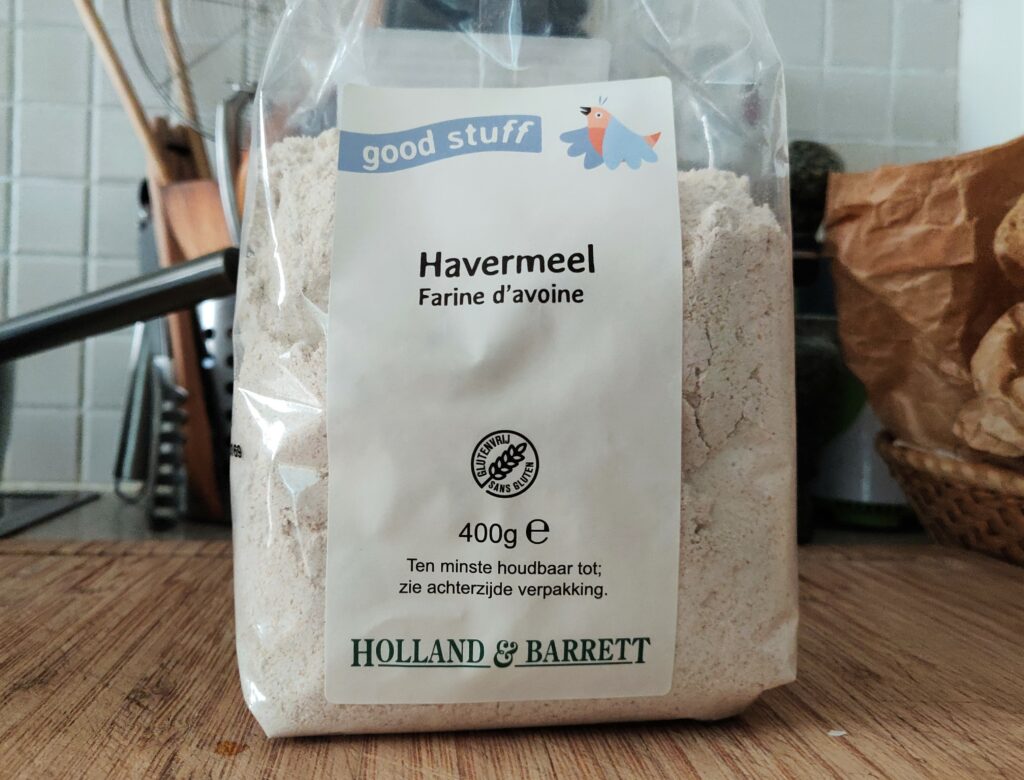

This was so wonderful! My friends and I got together to cook gluten-free recipes from China, and we had so much fun making (and eating) these! I loved the texture of the final product, they had such a lovely chew. I will make these again! I made a dipping sauce with vinegar, soy sauce, and chili oil.
Thank you for your kind comment, Ellen! I’m glad you guys had fun making this! Totally agree how lovely the texture is. That spicy acidic dipping sauce you made sounds like a good companion to the pasta 😉